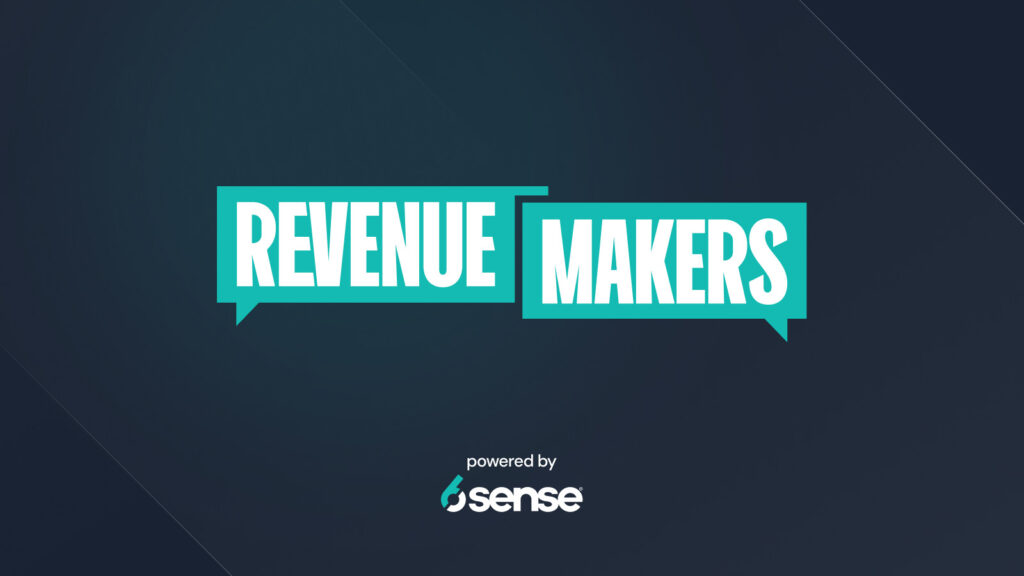When your marketing team guesses about the interests and intentions of potential customers, they waste valuable resources crafting campaigns that may miss the mark.
They also waste time and money chasing prospects who may not be ready to engage.
Intent marketing eliminates guesswork.
What is intent marketing? Intent marketing is a marketing approach that uses intent data on potential customers’ purchase intentions to tailor marketing efforts more effectively.
It is also the best way to give your customers what they need to seriously consider your business as a potential partner: relevant, personalized, and compelling messaging.
How do you get started with intent marketing? This guide offers a roadmap with practical insights from 6sense.
Understanding Intent Marketing and Intent-Based Marketing
Intent marketing is sometimes called intent-based marketing. You might hear these terms used interchangeably, which makes sense: They mean the same thing.
Both terms emphasize the importance of using data about potential customers’ purchase intentions to tailor your marketing efforts and drive results.
Evolution of Intent-Driven Strategies
Intent marketing has not always been as accessible as it is today. “Big Data” came first – the ability to capture vast amounts of information. But interpreting that information and turning it into actionable insights was usually time prohibitive.
Technological advancements, such as artificial intelligence and machine learning, have enabled businesses to analyze vast amounts of data and pinpoint buyer intent with unprecedented accuracy and speed.
So, while identifying and targeting potential customers may have once demanded extensive manual effort, modern AI-powered marketing platforms now streamline this process. With just a few clicks, businesses can identify high-intent prospects swiftly and efficiently.
The Benefits of Intent Marketing
Understanding the buying intent of your target prospects can revolutionize your marketing strategies. Here are a few examples.
Targeting and Personalization
Intent-based marketing unlocks unparalleled targeting accuracy and message personalization.
For example, with 6sense, you can discover what prospects are interested in by tracking their online behaviors, such as website visits, content downloads, and keyword research.
Consider a scenario where you oversee marketing for a data management software company. Through intent data analysis, you discover that a prospect has been researching data management solutions and evaluating different software providers.
With these insights, you can craft a personalized email highlight how your software streamlines data organization, improves efficiency, and ensures compliance with data regulations.
This personalized approach significantly increases the likelihood of conversion compared to generic marketing messages.
Efficiency and ROMI (return on marketing investment)
When you target users who have shown genuine interest in your products or services, you can allocate your marketing budget more efficiently.
Rather than thinly spreading your resources across a broad audience, you are concentrating on prospects actively seeking solutions like yours.
For example, suppose you operate a digital marketing agency specializing in social media management. By looking at intent data, you identify prospects who have been researching social media automation platforms on software review sites.
By directing your marketing efforts towards these high-intent users, you can confidently invest your marketing budget in individuals who are closer to making a purchasing decision.
Implementing Intent Marketing with a Focus on Intent-Based Strategies
Here is a practical guide to help you implement intent-based marketing to elevate your marketing efforts.
Define Your Intent Marketing Objectives and Goals
When defining your intent marketing objectives and goals, aligning them with your overall business objectives is essential.
Examples of good objectives and goals for intent marketing include:
- Increasing lead generation. Use intent data to identify high-intent prospects and target them with personalized marketing campaigns to drive more leads.
- Improving conversion rates. Leverage intent insights to tailor messaging and content to align with prospect needs and increase the likelihood of conversion.
- Enhancing customer engagement. Use intent data to deliver relevant, timely communications that resonate with customers and boost loyalty.
Use and Integrate Intent-Based Marketing Tools
With 6sense, you gain access to a comprehensive suite of features designed to uncover valuable insights about your target audience’s buying intent and behavior.
Choosing a tool that easily integrates with your existing tech stack is also essential to ensure smooth data flow and streamlined workflows. 6sense integrates with an extensive list of CRM (Customer Relationship Management), email marketing automation, and sales enablement tools.
Track and Measure Key Performance Indicators
By monitoring KPIs, you can assess the impact of your new intent-based marketing strategies, identify areas for improvement, and make data-driven decisions to optimize future campaigns.
Measuring KPIs by adhering to standardized marketing attribution also allows you to allocate resources more efficiently, maximize ROMI, and achieve future marketing objectives more effectively.
In 2022, Forrester Research found that companies who applied intent-based marketing strategies on accounts identified as strong opportunities by 6sense achieved:
- 454% ROI
- 2x increases in average contract value
- 4x increase in win rate
- 31% increase in opportunity
Best Practices in Intent-Based Marketing
Data-Driven Decision Making
Start by collecting data from various sources, such as website analytics, social media insights, and customer interactions.
Analyze this data to uncover patterns, trends, and buyer intent signals. Tools like 6sense make deep analysis and pattern recognition quick and efficient.
Once you have analyzed your data, apply the insights to tailor your marketing strategies for maximum impact.
For example, by analyzing the website traffic patterns of closed-won accounts, you can identify which pages or content topics resonate most with your buyers. You can then use this data to optimize your website structure and content strategy to better align with customer interests.
Adapting to Customer Insights
Staying agile is crucial to success. Continuously adapt your strategies based on real-time customer intent data to remain relevant and effectively engage your audience.
For example, if you notice a sudden spike in searches for a particular product feature, you can swiftly adjust your messaging to highlight its benefits.
By proactively responding to changing customer behaviors and preferences, you can maintain a competitive edge and drive better results in your marketing campaigns.
Ethical Considerations
Always obtain explicit consent before collecting and utilizing personal data for marketing purposes. Doing so allows you to build trust with your audience and demonstrate your commitment to respecting their privacy and rights.
For example, when capturing lead information through forms, clearly communicate how you will use their data and provide opt-in options.
Also, ensuring you comply with data protection regulations like GDPR and CCPA should be ensured to safeguard individuals’ privacy rights.
It is also essential to regularly review and update your privacy policies to reflect any changes in data handling practices.
Conclusion
By embracing intent marketing and intent-based marketing strategies, you can harness the power of data to personalize engagement and boost ROI for your business.
Ready to unlock valuable insights into customer intent and behavior? Explore 6sense’s Intent Data platform.
You can also read our comprehensive guide on intent data to learn more about implementing effective intent-based marketing strategies.





